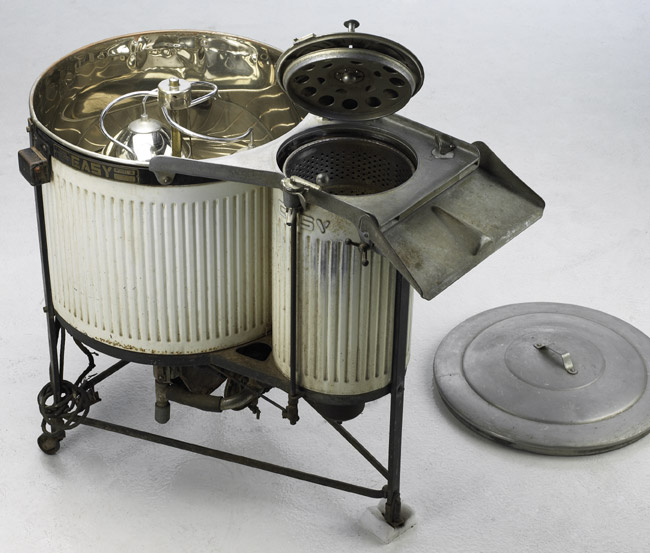 Syracuse 'Easy' washing machine, 1920s-30s
Syracuse 'Easy' washing machine, 1920s-30s
TLF ID R6387
This is an electric domestic washing machine of a type that was manufactured by the Syracuse Washer Corporation under the name 'Easy' during the 1920s and 30s. The machine is made from enamelled metal and stainless steel, and features two tubs set in a triangular frame. The larger tub is the agitator tub and the smaller tub acted to rinse and spin the clothes. The washing machine stands 98.2 cm high, is 104.4 cm in length and 62.0 cm wide.
